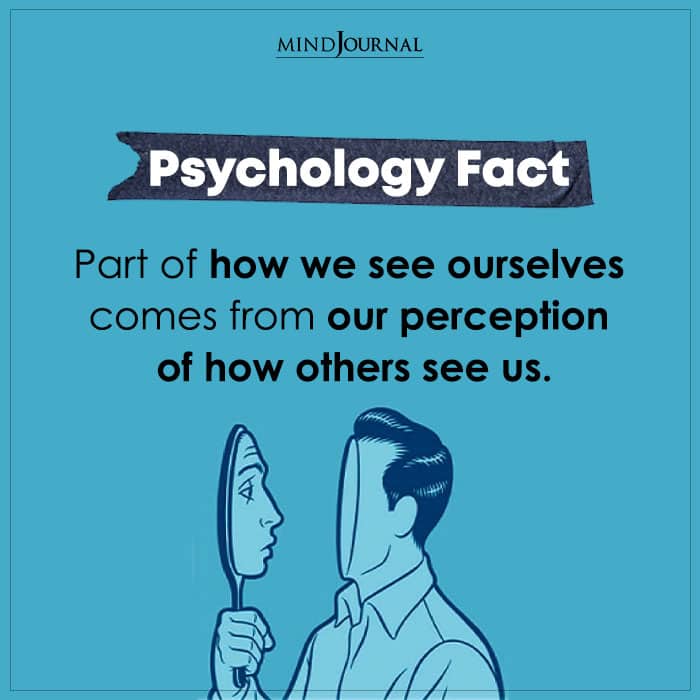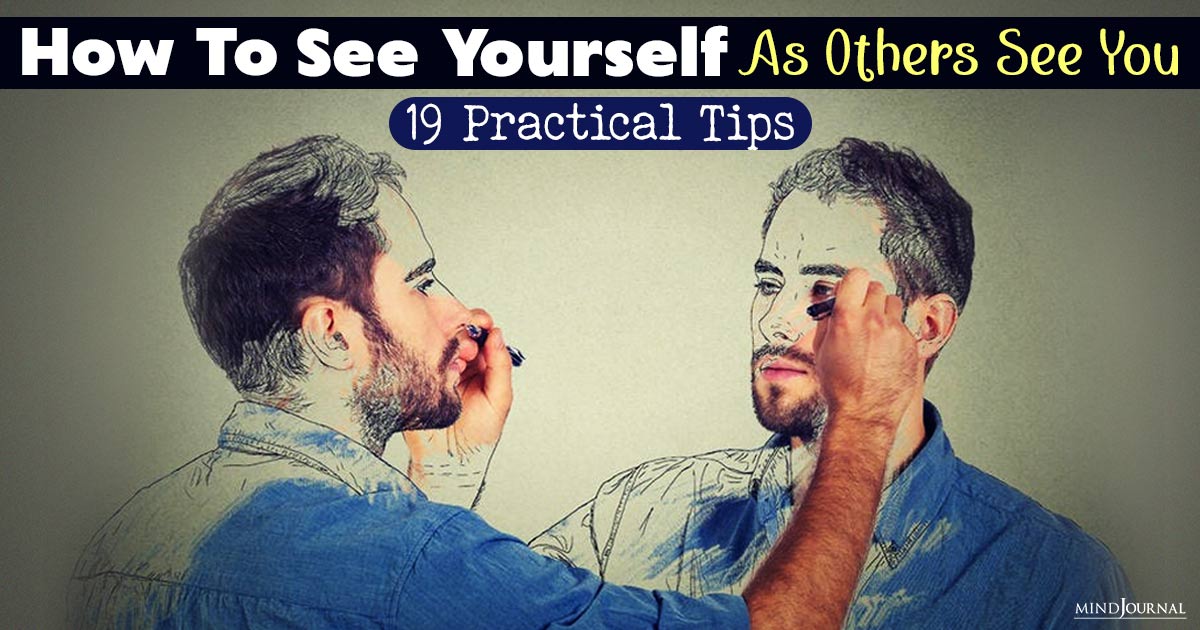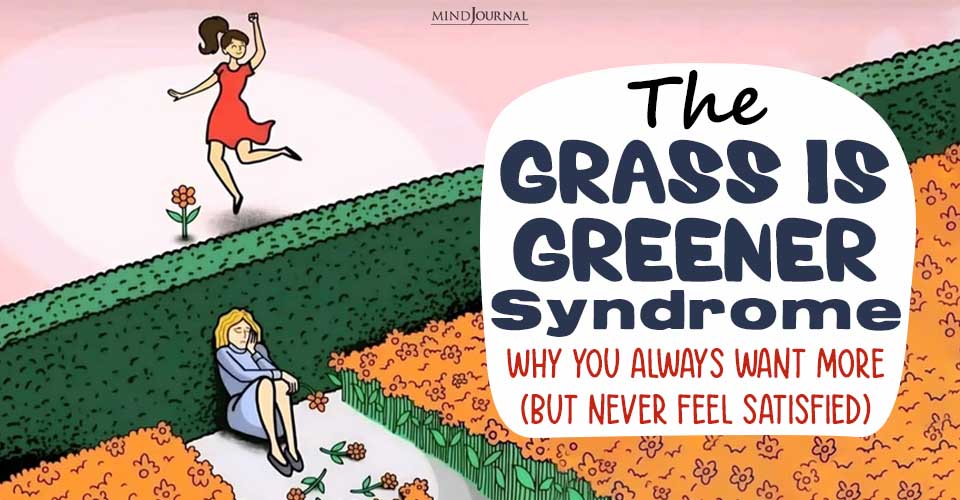Ever wondered what people think of you? Who are you in the eyes of others? Want to look at yourself through someone else’s eyes and transform your personality? Let’s explore how to see yourself as others see you and learn about your strengths, weaknesses, and the effects you have on others.
Let us dive deep into the core of self-reflection and learn techniques that can enable us to see ourselves from another person’s perspective. By knowing to see yourself how others see you, it is possible to be more self-aware and grow both personally and professionally.
How to See Yourself as Others See You
Perception is the lens through which we view the world, interpreting others’ actions, behaviors and motives. It influences us when making judgments.

Understanding how we come across to others can offer insight into our self-image by identifying blind spots, appreciating talents or potentials that one possesses but has not utilized.
Related: Redefining The Self: How Do You Discover Yourself Through Your Perception of Others
Here are a few effective ways on how to see your true self –
1. Developing Self-Awareness
To start seeing yourself through the eyes of others; develop a habit of introspection and reflecting upon oneself. Regularly monitor your thoughts, emotions as well as behavior. Get to know your values, strengths and weaknesses.
Understand how you are impacting other peoples’ lives with your deeds or choices. Once developed, self-awareness helps align personal views of oneself with public opinions leading to growth in both your career and personal relationships.
2. Engage in Self-Reflection
Want to see yourself how others see you? Then reflect on self. Assign specific time regularly for engaging in self-reflection. Create a serene environment where no one distracts or interferes with you while you introspect.
Ponder over your thoughts, emotions, actions while considering they could be seen by an outsider. Consider your strengths, weaknesses, and areas for improvement.
This simple act makes a person understand him/herself better than ever before and gain insights on how others may perceive them.
3. Seek Diverse Perspectives
Make new friends and expand your social circle to interact with individuals from different ethnicities, backgrounds and cultures. Look out for and accept diverse perspectives and viewpoints on life to expand your understanding of reality.
By doing this, you can expose yourself to different opinions and ideas and challenge your own biases to learn more about yourself. Appreciating diversity enables you to see yourself through the eyes of others who are from different backgrounds.
4. Conduct a 360-Degree Feedback
During 360 degree feedback, information is collected from different sources such as managers, co-workers, and subordinates, or even clients. It gives a complete picture of yourself as it is seen by everyone around.
Depending on the degree of honesty present, this might help in shaping a genuine way of living. This is how to see yourself as others see you.
5. Observe Others’ Reactions
Watch how individuals respond to your words and actions to see yourself how others see you. Observe their facial expressions, body language, and changes in tone of voice while interacting with them.
These small changes in gestures can communicate so much about how others see you. In case the mannerisms are common among most people around you may imply specific aspects of behavior or communication worth improving.
Seeing repeated patterns of responses on their part may indicate that some of your behavior or communication techniques should change.
Related: 5 Things to Do Instead of Comparing Yourself to Others
6. Engage in Perspective-Taking Exercises
Perspective taking involves deliberately thinking like someone else would do and looking at things from his/her viewpoint. Pick one person who matters to you and try to put yourself inside his/her shoes.
Use your imagination to think how your actions, behaviors, and intentions are perceived by others. This exercise fosters empathy and helps you gain valuable insights into how to see yourself as others see you.
7. Pay Attention to Online Presence
In the current digital era, your online presence has a significant impact on how people see you. Take some time to review your social media profiles, online comments or posts, and any other digital footprint that you have.
Evaluate if the virtual persona you exhibit online aligns with what you want others to perceive when they think of you. Make sure to think about the content that you share, the language that you use and how you interact with people online.
8. Seeking a Mentor or Coach
Still want to know how to see your true self? Then a mentor or coach can be helpful when it comes to growth both personally and professionally. Such individuals can give an outside perspective that will make you realize how others are seeing you.
Through mentoring/coaching one is able to identify their blind spots as well as know how best to improve in such areas.
9. Conduct Informal Surveys/Interviews
Create a simple survey or conduct informal interviews with a select group of individuals to gather their perceptions of you. Obtain feedback on your strengths and weaknesses from these people by asking them open-ended questions that do not put pressure on them.
It is important to maintain confidentiality and make sure that those who participate understand that their responses will form part of your effort to know yourself better. Such information can help generate meaningful insights about ourselves.
10. Embracing Vulnerability
Allowing yourself to be vulnerable with others strengthens your bond and enables you to see yourself from another person’s perspective. Share thoughts, fears, aspirations with trusted people around you.
When others witness our vulnerabilities, they are able to show us our real selves in different ways while we also get their diverse opinions about us.
Trust building and relationship strengthening come through embracing vulnerability. This is one of the best tips on how to see yourself as others see you.

11. Empathic Listening Practice
When having conversations with other people, practice empathic listening skills. Truly listen to what they are saying without judging early or interrupting them before they finish speaking.
Show interest in understanding their point of views and ask for further explanations where necessary.
In order to have a deeper understanding of their perception of you and the impact you have on them, try to be fully present and attentive. This is the way to see yourself how others see you.
12. Ask for Feedback on Specific Situations
Instead of generally asking for feedback, request input about specific situations or interactions. For instance, feedback on your most recent presentation or a difficult conversation or even a particular teamwork activity could be sought after.
If you focus on particular moments like these, then the feedback from other individuals will be more precise and give a clearer picture of what others think about you in different contexts.
Related: How You Perceive Others Reveals Who You Are
13. Doing a Self-Perception Exercise
Write down your self-perception in different aspects of your life such as personal relationships, work, hobbies and so on. Then ask a few trusted people to describe how they perceive you in those areas.
Compare the two sides; look at similarities and differences during this exercise and use it as an opportunity for self-reflection and self-improvement. This is an excellent strategy on how to see your true self.
14. Active Observation Practice
Observe how others interact with each other and respond to different individuals in various situations. Notice the dynamics within these environments including; how people react differently towards different styles of communication as well as the impact they have on others.
This observation helps us pick up on social cues, allowing us to find out more about ourselves when people interact with us.
15. Personality Assessments Participation
Take advantage of personality assessments such as Myers-Briggs Type Indicator (MBTI), Big Five Personality Traits among others to gain an increased understanding of yourself and how he/she might come across to others.
These tests reveal one’s preferences in communication, style of relating with other people, making one get an insight into his/her personality traits.
16. A 24-Hour Self-Observation Test
Allocate a day for uninterrupted self-observation. Watch your thoughts throughout the day, how you behave and also how you interact with others.
Try to develop patterns or recurring behaviors that could shape other people’s attitudes about you. This state of heightened self-awareness can provide valuable insights and chances for personal growth, along with understanding how to see yourself as others see you.
17. Identify Unconscious Biases
To know how to see your true self, reflect on any unconscious biases you may have which might impact upon how you perceive yourself or others. These biases are our preconceived and deeply ingrained ideas that influence our judgments and interactions.
You can dispel them if you recognize them so as to have a more objective opinion about what others think of you.
Related: 12 Things You Can Do To Build Your Self-Esteem: A Step-By-Step Guide
18. Seeking Feedback from Different Generations
Get in touch with individuals from different age groups and get their views on your conduct, way of speaking, general presence among other things.
Their perception can significantly change depending upon the generation gap and generational differences, which can provide a more comprehensive picture of how you are perceived across generations.
19. Reflect on Intention vs. Impact
As you do things, think of the reasons why you do them and what effect they will have on others. You may have good intentions, but it may not have the desired effect.
Understanding this gap will help you in developing mutual understanding and agreement between your intentions and other people’s interpretations of your behavior.
The strategies above on how to see yourself as others see you can be used as part of a self-discovery process that will help to understand better how others see you. Keep an open mind, be willing to learn and be committed to personal growth as you go through the process.
When you are able to see yourself how others see you, your relationships improve, communication is enhanced and a greater sense of self-awareness is developed.

Takeaway
Seeing yourself through others’ eyes is a journey full of self-discovery and personal development. By following the tips above, you can get a clearer picture of how others see you.
With this new awareness comes the power to bring about conscious changes, improve relations with family members or friends and align your self-perception with the impact you want to have on the world.
Remember that perception is not static but evolves with personal growth. Embrace the journey of self-discovery, be open to feedback and strive for personal and professional growth.
You might be amazed at the wisdom you acquire and the positive impact it has on your life.
Frequently Asked Questions (FAQs):
Is it possible to see yourself as others see you?
By achieving self-awareness, one can see themselves as others do and develop empathy for differing opinions.
How you view yourself how others view you?
Aligning self-perception with the perception of others improves interpersonal connections and leads to a more accurate understanding of oneself.
Why do I not see myself as others see me?
Self-censorship, self-doubt or misunderstanding oneself are barriers to seeing ourselves through the eyes of others. It affects our confidence in ourselves and ruins our relationships with other people.










Leave a Reply